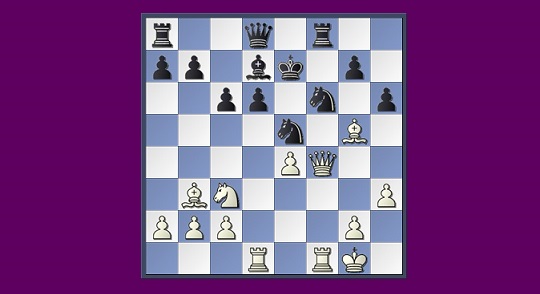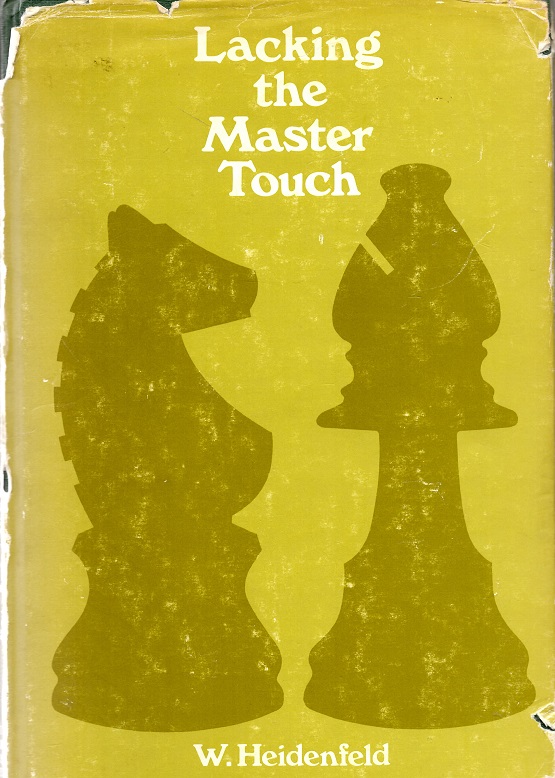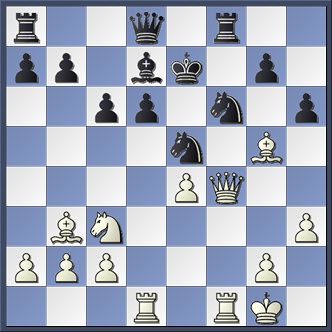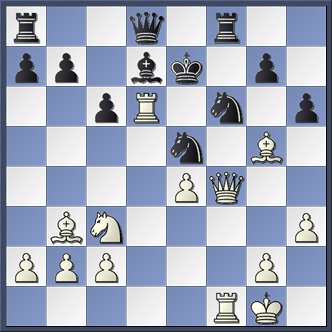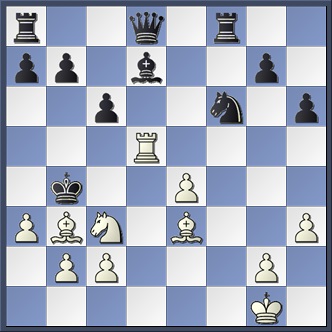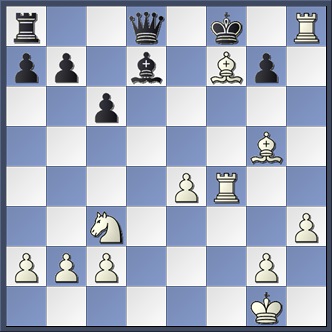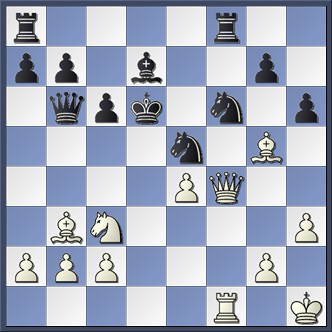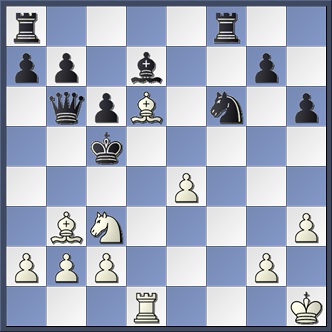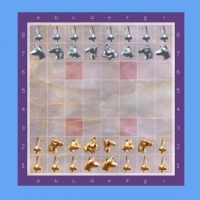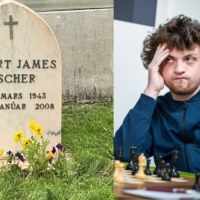‘. . . chess is a difficult game. If it were less difficult it would not be so much fun . . .
. . . what most captures my imagination and arouses my admiration is neither the perfect technique nor the stunning combinative power of one partner, but the clash of personalities of both. The “Battle in the Balance” in which both sides try to calculate the virtually incalculable, and risk everything to gain everything . . . has always held a particular fascination for me. It may be a Quixotic attitude, but the analysis of positions that defy analysis has always seemed a rewarding task to me − I only wish I were better at it . . . I find most worthy of appreciation everything that shows how difficult chess is – not how easy it can be made to look.’
The first game in the book is a ‘conventional’ brilliancy from Heidenfeld’s youth (he was 17 or 18 at the time).
Heidenfeld – Zietemann
Berlin 1929
White to play
17 Rxd6!
I still remember the excitement that gripped me as I made this move. After I had decided on it, I jumped up and went round the room to calm down and then go once again over the eventualities of the combination before finally committing myself.
17…Qb6+(?)
This merely hastens the end. If Black accepts the rook at once, there would have followed 17… Kxd6 18 Qxe5+! Kxe5 19 Bf4+ Kd4 20 Rd1+ Kc5 21 Be3+ Kb4 22 Rd4+ Kc5 23 Rd5+ Kb4 24 a3 mate.
The king hunt was frequently seen in 19th century games, but what distinguishes the combination is the possibility of a defence demanding a second queen sacrifice that drives the king to the other end of the board: 17… Ng6! 18 Rxf6! Nxf4 19 Re6+ Kf7 20 Rxf4+ Kg8 21 Rxh6+ Rf7 22 Bxf7+ Kf8 23 Rh8 mate.
Black’s best defence was 17…Ng6! 18 Rxf6! and now 18…Qb6+. White must not continue as above, with 19 Kh1? Nxf4 20 Re6+ Kf7 21 Rxf4+ Kg8 because in the position after 22 Rxh6+ Black would have the resource 22…Qxb3 23 axb3 gxh6; and White discovers that he has sacrificed too much material. White would therefore continue with 19 Qf2! gxf6 20 Qxb6 axb6 21 Bxh6 followed by 25 Bg7, winning three pawns for the exchange with the much superior game. As so often happens against the best defence (Anderssen’s Immortal Game against Kieseritzky is the classic example), even the stormiest combinations may lead only to a small material or positional advantage, and the early mate is due entirely to the defender’s lapses.
18 Kh1 Kxd6
Now 18… Ng6 is no longer playable: 19 Bxf6+ Rxf6 20 Rxd7+! Kxd7 21 Qg4+ Ke7 (otherwise the black knight is lost after 22 Rxf6) 22 Rxf6 Kxf6 23 Qe6+ Kg5 24 Qf5+ Kh4 25 Qg4 mate.
19 Qxe5+ Kxe5 20 Bf4+ Kd4 21 Rd1+ Kc5 22 Bd6 mate

